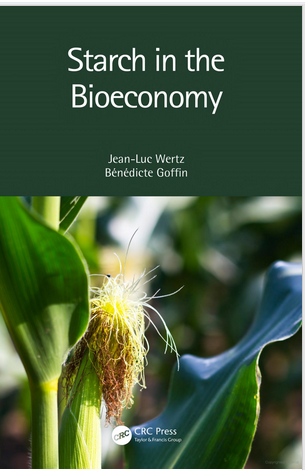Starch is the most widespread and abundant reserve carbohydrate in plants and is unique in that it can be used for the production of food, materials in bio-based products, and energy.

Starch remains more than ever vital for our society. This holds nutritionally and economically in the broadest sense, having an impact at the agricultural level as well as in materials and energy. As a global renewable resource, it is, therefore, crucial to consider starch in the context of the environmental challenges the world is facing. In the introduction of this book, these issues are addressed and considered through the principles of the bioeconomy and circular economy. The crucial market features complement these with respect to sources, producers, and trends. At the core of this bioeconomy are the biorefineries which sustainably transform biomass into food, feed, chemicals, materials, and bioenergy (fuels, heat, and power) generally through plant chemistry. Its sectors and industries have strong innovation potential due to increasing demand for its goods and for their use of a wide range of scientific disciplines and industrial technologies.
Such innovation potential and technological achievements can only be developed based on sound scientific fundamentals and knowledge. Chapters 2, 3 and 4 address our present state of understanding of the starch granule, its biosynthesis, and biodegradation. Chapter 2 devoted to the structure of starch provides a key to the understanding of more than 50 years of research that have been dedicated to the elucidation of the structures of amylose and amylopectin. The reader will be introduced to the terminology that, over the years, has been designed to characterize the elements resulting from controlled starch hydrolysis. From these, various models have been proposed; however, none of them are entirely satisfactory in explaining starch hydrolysis, with different models still under scrutiny. Chapter 3 provides a detailed overview of starch biosynthesis. It covers the localization of synthesis in leaves, and storage tissues, and the enzyme reactions involved in starch synthesis. In addition to the core enzymes of the starch biosynthetic pathway, regulatory enzymes and noncatalytic proteins have been discovered that play a r le in coordinating enzymes and enzyme complexes during starch synthesis. Although starch-biosynthetic enzymes are highly conserved, sufficient knowledge is still required for the rational modification of starch structure and properties in crops. Progress in engineering new starches with enhanced functionalities in planta has been empirical and slow. There is still much room to realize the full potential of starch. Chapter 4 devoted to starch degradation describes the biodegradation scheme occurring in planta with the transitory starch turnover in Arabidopsis. This is followed by a description of the current view on the pathway of starch degradation in leaves and cereal seeds. Chapter 5 is devoted to the description of the properties of starch and modified starches. It covers not only the physicochemical aspects but also starch digestibility. A comprehensive presentation of the different steps undergone during the ingestion, digestion, and absorption in humans ends with some considerations on resistant starches. Modifications of starch via physical, chemical, and biochemical processes yield a variety of substrates that constitute a formidable reservoir of products with functional properties that are considered indispensable ingredients in the industry. Chapter 6 gives an up-to-date picture of the worldwide production of starches with a particular emphasis on the main uses in the food and non-food industries, including the energy sector. Aside from the established manufacture of starch bioplastics, a new class of starch-based polymer nanocomposites offer a promising alternative to conventional plastic. Chapter 7 summarizes the elements and arguments in favour of a bio-based, circular economy focusing on (1) the sustainability of starch products; (2) thermoplastic starch-based renewable, biodegradable bioplastics; (3) starch for the production of bio-ethanol; (4) starch for new applications of ionic liquids; and (5) starch as a feedstock for advanced functional materials. Appreciation of the feasibility of such a vision lies in the sustainability of starch products under economic, environmental, and societal pillars.
The book “Starch in the Bioeconomy” is aimed at active or curious readers of starch science, technology, and economics. Built on a reliable and well-documented base of information, the book presents the paths that remain to be taken to decipher this still mysterious resource that has contributed so much to the rise of humanity. It
also puts into perspective the enormous potential of starch and how it can contribute to develop a sustainable circular bioeconomy for the benefit of the economy, the
environment, and society.




